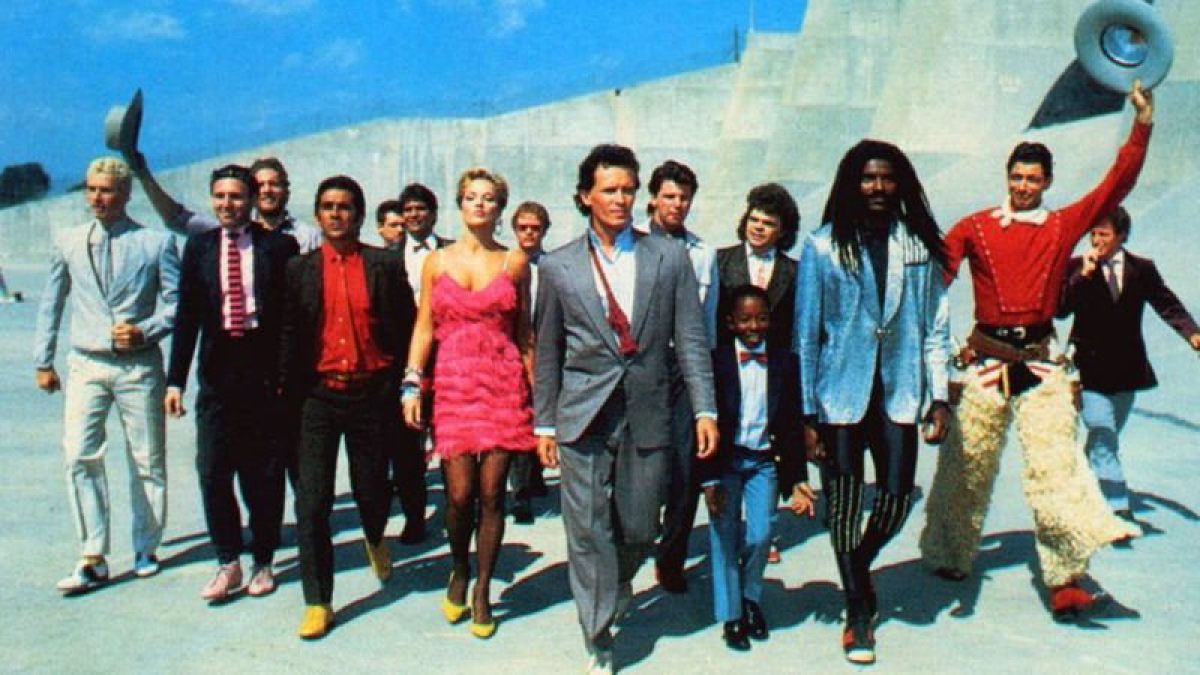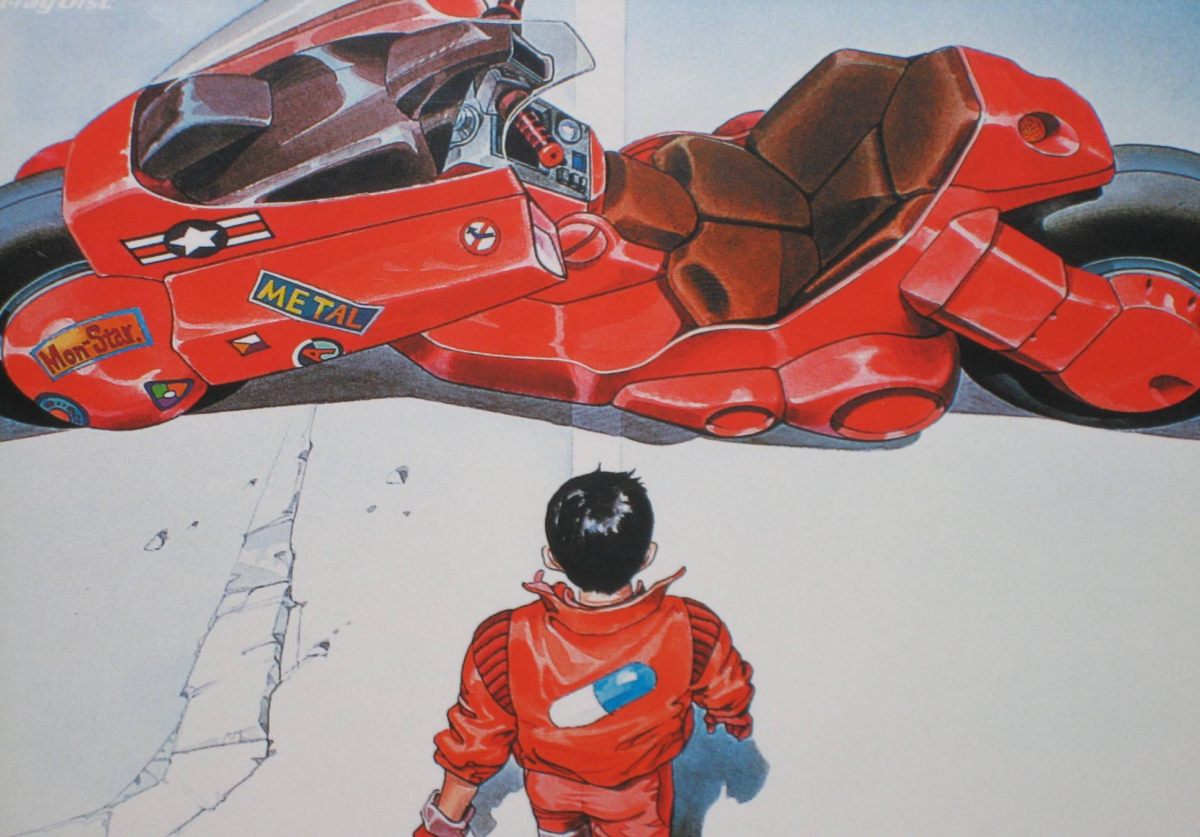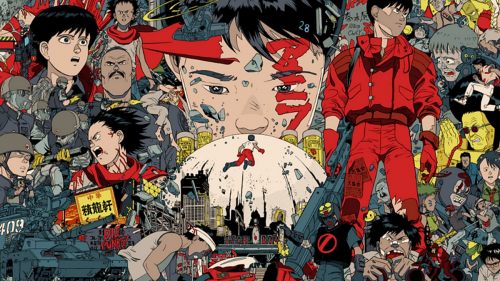READY PLAYER ONE: A Preparatory Film Playlist
Ready Player One tickets are on sale now. Get yours here!
From what we’ve seen so far, Steven Spielberg’s Ready Player One (check out our review here) is going to be a wall-to-wall smorgasbord of cultural references. That’s in keeping with author Ernest Cline’s bestselling novel, in which the plot is a setup for a book-length exploration of all of Cline’s favorite parts of '80s and nerd culture.
The book’s hero, Wade Watts (played by Tye Sheridan in the film), spends most of his time in a Second Life-style virtual reality program called the OASIS, created by enigmatic genius--and child of the '80s--James Halliday. After Halliday dies, a video is posted introducing a competition. Halliday will leave his vast fortune, and control of the OASIS, to the first person to solve a series of challenges relating to Halliday’s '80s-based childhood obsessions. Winning the competition becomes a worldwide fixation, with OASIS users becoming veritable Wikipedias on all things relating to it.
Given Ready Player One’s plethora of references, you’re likely to come out of reading or watching it with a lengthy list of stuff to watch. Here are four movies referenced in the book, and one from the film, that may give you an idea of what to expect when Spielberg’s film drops March 29.

Brazil
References: Sam Lowery (Jonathan Pryce’s awkward hero) and Harry Tuttle (Robert DeNiro’s renegade plumber) are aliases Wade uses in the book.
Terry Gilliam’s 1985 dystopian masterpiece serves as both a direct and thematic reference in Ready Player One. Both involve a protagonist who spends his energy trying to mentally escape a reality choked with pollution and overpopulation. The headquarters of the book’s evil tech corporation, Innovative Online Industries, also resembles Brazil’s Ministry of Information. Some of those gray, grimy aesthetics seem to have come through in the film’s trailers, which suggests that the OASIS of the movie may not be as bright and shiny as it is in the book.

Ladyhawke
References: In chapter 3 of the book, Wade and his best friend Aech have a lengthy Clerks-style debate over the movie’s status as a cult classic.
A peer of Labyrinth, The Princess Bride and The Neverending Story, Richard Donner’s movie isn’t one that comes up often when we talk about '80s high fantasy. This may be because it lacks the self-awareness, rockstar performances and iconic character design that make those other three films stand out. It’s got a nostalgic charm all its own, though, thanks to its goofy Alan Parsons-produced score, '80s-meets-medieval production design, and the presence of decade heavies Matthew Broderick, Michelle Pfeiffer and Rutger Hauer (in a rare good guy role). Ladyhawke is a movie that deserves more recognition than it gets. Here’s hoping references to this glorious chunk of cheese make it into Spielberg’s adaptation.

The Adventures of Buckaroo Banzai Across the 8th Dimension
References: In the book, Wade’s tricked-out car in the OASIS contains Buckaroo Banzai’s Oscillation Overthruster. Later, at a party, Wade shows up dressed like Peter Weller’s Buckaroo.
Given Buckaroo Banzai’s prominence in Cline’s novel, there’s no time like the present to watch the weirdest cult movie to come out of the Reagan era. This eye-popping mashup of '80s fashion, atomic age nostalgia, cowboys, aliens and samurai is one-of-a-kind, and watching it can be a polarizing experience--either you accept the nonsensical plot and go along for the ride, or you don’t. Buckaroo Banzai’s wild combination of styles and anything-goes mentality also provide a good sense of the book, which smushes together all manner of incongruous settings and styles to entertaining effect.

Real Genius
References: In the novel, Wade compares fellow OASIS gamer Art3mis to Michelle Meyrink’s character, Jordan. A poster for the film also shows up in a simulation of Halliday’s childhood bedroom in the OASIS.
Like Buckaroo Banzai, Real Genius reflects the bright, fun-loving attitude of Cline’s novel, as well as its rag-tag team dynamics. And like Ladyhawke, it’s an oft-overlooked part of its genre--in this case, 80s comedies. That’s a shame, because its legacy is a little more wholesome than some of its brethren, and it genuinely loves its cast of awkward nerds, celebrating their quirks rather than ridiculing them. This movie has Val Kilmer at his most charming, William Atherton at his douchey best, and is one of only a few classics of the decade directed by a woman (Martha Coolidge, who also gave us Valley Girl). It may not be a moral imperative that you watch it, but it is highly recommended.

Akira
References: A featured vehicle in the film is patterned after main character Kaneda’s motorcycle.
On one level, Akira’s presence in Ready Player One makes a lot of sense. Katsuhiro Otomo’s seminal film is a major cornerstone of anime fandom. It also shares Ready Player One’s cyberpunk setting. However, Akira’s take on technology, economic progress and the way they take over a culture isn’t exactly complimentary. One way to read the film is a representation of the fear that Japan’s lightning-fast advancements after WWII threatened to erase its unique culture. That Akira shows up in the film, but not in Cline’s novel, suggests that Spielberg might have a darker, more critical take on the story in store.



